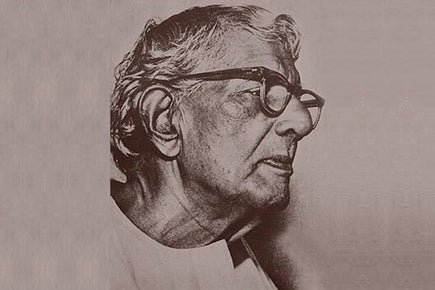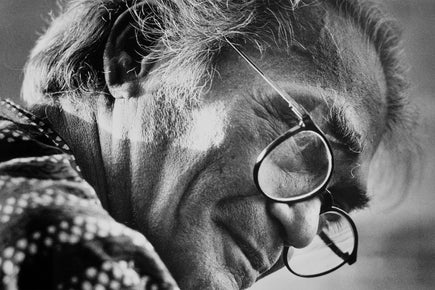The 7 Art Forms You Must Explore in Vietnam
Only 40 years after a destructive war, Vietnam has, in recent years become one of the world’s favourite travel destinations! With its surreal natural beauty, scrumptious food, rich culture, gorgeous beaches, colonial French influences, and bustling cities, there is so much to experience in this incredibly friendly and diverse country in South East Asia!
 (A bustling night in the lantern lit town of Hoi An)
(A bustling night in the lantern lit town of Hoi An)
And amidst everything else that Vietnam offers, the art and craft is not to be missed, celebrating centuries-old traditions while embracing modernity! An extremely affordable destination, the sheer breadth and quality of art and craft available in Vietnam can astound and overwhelm visitors. So here is Artisera’s pick of 7 art styles you must explore in Vietnam!
1. Lacquerware
Vietnamese lacquerware stands apart for its layered workmanship. A complex and intricate art form, it entails an extremely time consuming and labour-intensive process that can take around 100 days and 20 stages to complete. High-gloss lacquer (a resin of the lacquer tree) is usually applied to a wooden base with inlays such as mother-of-pearl, duck egg shells, gold or silver leaves.
 (An artisan finishes work on lacquered plates with traditional Vietnamese designs)
(An artisan finishes work on lacquered plates with traditional Vietnamese designs)
Specialized lacquerware products were made by artisans in the Nam Ngu District of Hanoi since as early as the 18th century. Lacquered items have also been discovered in ancient tombs in Vietnam dating as far back as 3rd - 4th centuries BC. While initially lacquerware colours were restricted to black, red and brown, more pigments were introduced over time, and today one can find a range of home décor accessories such as vases, decorative accents, tableware and more, in a multitude of vibrant colours!


2. Lacquer Paintings
While lacquerware finds its origins in China, Lacquer Paintings are an original art form of Vietnam. Post the formation of Ecole des Beaux-Arts de l’Indochine by the French in 1925 (Vietnam University of Fine Arts), lacquer made its way into paintings, as the Founders recognised the aesthetics of Vietnamese artistic traditions, and encouraged students to embrace their heritage along with the teachings of Western painting. The 1930s were a huge revolution for this genre.
 (Lacquer on Wood Painting by internationally renowned artist Bui Huu Hung, available on Artisera)
(Lacquer on Wood Painting by internationally renowned artist Bui Huu Hung, available on Artisera)
What makes Vietnamese lacquer paintings unique, is that their look remains magnificent for years, because of the complex procedure through which they are created. Today, lacquer paintings are easily available for purchase in busy tourist areas as well as established galleries in Hanoi and Ho Chi Minh. They differ in quality, with prices starting from a couple of hundred US dollars and going into the thousands. Amongst living artists, Cong Quoc Ha is one of Vietnam’s finest lacquer painters, renowned internationally.
 (A 1944 lacquer painting by famous artist Nguyen Gia Tri titled 'Girls and Flowers')
(A 1944 lacquer painting by famous artist Nguyen Gia Tri titled 'Girls and Flowers')
3. Silk Paintings
Characterized by their softness, elegance, transparency of colours and fluidity of style, silk paintings of Vietnam hold their own place, distinct from those of China and Japan. As per the traditional style, a silk canvas is directly used as the backdrop of the painting. Typically, themes such as landscapes, pagodas, rustic countrysides, rural life, or historical events are depicted. The beautiful combination of delicate hues and the silk background creates a magical effect. Artists require complete mastery of the material to be able to make use of silk’s natural sheen and attractiveness. Silk paintings are available at many art galleries and souvenir shops in Hanoi and Ho Chi Minh City. The price varies as per the quality, aesthetic appeal and skill of the painter.

4. Lanterns in Hoi An
A UNESCO World Heritage city, Hoi An is a quaint picturesque town in central Vietnam, where one sees myriad lanterns everywhere! While during the day they paint the streets of the Ancient Town with bright colours, night time is simply magical with thousands of lanterns reflecting their light on the nearby river.
 (Beautiful silk lanterns at a shop in Hoi An)
(Beautiful silk lanterns at a shop in Hoi An)
Luring visitors with vibrant colours, workmanship and delicately executed designs, Hoi An’s lanterns are known for their durability. In the 16th and 17th centuries, when Hoi An was a bustling commercial centre, merchant ships arrived from across the world to exchange goods. It is believed that since silk was sought-after in the town, silk lanterns were designed to meet the increasing demands in interior design. Hanging them in front of one's home was considered to bring in luck, health and happiness.
Even today, the silk and brocades lanterns are hugely popular due to their aesthetic appeal, and because they don’t get spoilt with water and are easy to maintain. Now also made with other materials, the prices of Hoi An’s lanterns differ depending on size, colour and quality of the fabric. They are easy to fold and carry in a suitcase, making for a great purchase!
5. Hand Embroidery
The art of hand embroidery is embedded in Vietnamese culture, dating back more than 700 years. Kept alive in modern times by local artisans, ethnic minorities and artists, the technique is often learnt by high school girls as an extra-curricular activity. Used to create various decorative accessories such as pillowcases, tablecloths, and even silk embroidered paintings, the embroidery is characterized by the use of tiny threads to create fine lines, in a harmonious mix of vibrant colours. Flowers, animals, landscapes and religious scenes are the dominant themes depicted.
 (Exquisite Embroidery Painting made with silk threads; image source: vietnamtourism.org.vn)
(Exquisite Embroidery Painting made with silk threads; image source: vietnamtourism.org.vn)
You can stumble upon some arresting embroidered works at Dong Xuan Market in Hanoi. But it’s Tan My Design, a three-generation old family run enterprise in the Old Quarter of Hanoi, that is considered one of the finest producers of traditional Vietnamese hand embroidered products.
 (A hand embroidered scarf at Tan My Design)
(A hand embroidered scarf at Tan My Design)
6. Ceramics and Pottery
Vietnam’s tradition of ceramic making dates back thousands of years, flourishing during the rule of the Ly Dynasty (1010-1225). Along the way, Vietnamese ceramists have been strongly influenced by China after the Chinese invasion, and also taken inspiration from other cultures, such as Cambodia and India. Still, the Vietnamese style of ceramics is very distinctive, and believed to be among the finest and most widely exported across the world.
 (Old Ceramic Jars with traditional Vietnamese painting)
(Old Ceramic Jars with traditional Vietnamese painting)
Be it flower pattern bowls, decorative plates and vases, tea sets, or other home décor accessories, picking up some exquisite ceramics (both porcelain and pottery). is a must when visiting Vietnam. The ideal place to get a glimpse of the country's rich ceramic art form is Bat Trang Ceramic Village, famous for creating exquisite ceramicware since the 15th Century. A cute store in Hoi An’s Ancient Town is Reaching Out, with an array of delicate and beautiful ceramic products to choose from.
 (Hand painted ceramic tea set from the Reaching Out store in Hoi An)
(Hand painted ceramic tea set from the Reaching Out store in Hoi An)
7. Contemporary Art
While in Vietnam, one cannot help but take note of the contemporary art scene and its explosive diversity. From dramatic landscapes, to mesmerizing abstracts, exquisite figuratives to edgy contemporary creations, paintings by Vietnamese artists would undeniably rouse the interest of art lovers!
 (An exquisite painting of Buddhist monks by famous Vietnamese artist Nguyen Minh Phuoc, available for purchase on Artisera)
(An exquisite painting of Buddhist monks by famous Vietnamese artist Nguyen Minh Phuoc, available for purchase on Artisera)
In the past few decades, there has been increased international interest in the country's art scene, with works of Vietnamese artists being shows in Hong Kong, Singapore, Australia etc. The Gang of Five, comprising the painters Hong Viet Dung, Ha Tri Hieu, Dang Xuan Hoa, Tran Luong and Pham Quang Vinh, were among the initial Vietnamese artists to get global recognition in the 1990s. Today, smaller tourist focused shops selling extremely affordable art are everywhere.
 (An Exquisite oil painting by Hong Viet Dung from the Gang of Five, available for purchase on Artisera)
(An Exquisite oil painting by Hong Viet Dung from the Gang of Five, available for purchase on Artisera)
But if you’re looking at buying works of some of Vietnam’s most established and renowned artists, head to one of the upscale galleries lining the streets of the Old Quarter in Hanoi – you’ll be surprised at how affordable Vietnamese art is, compared to other countries, including India!

























































































